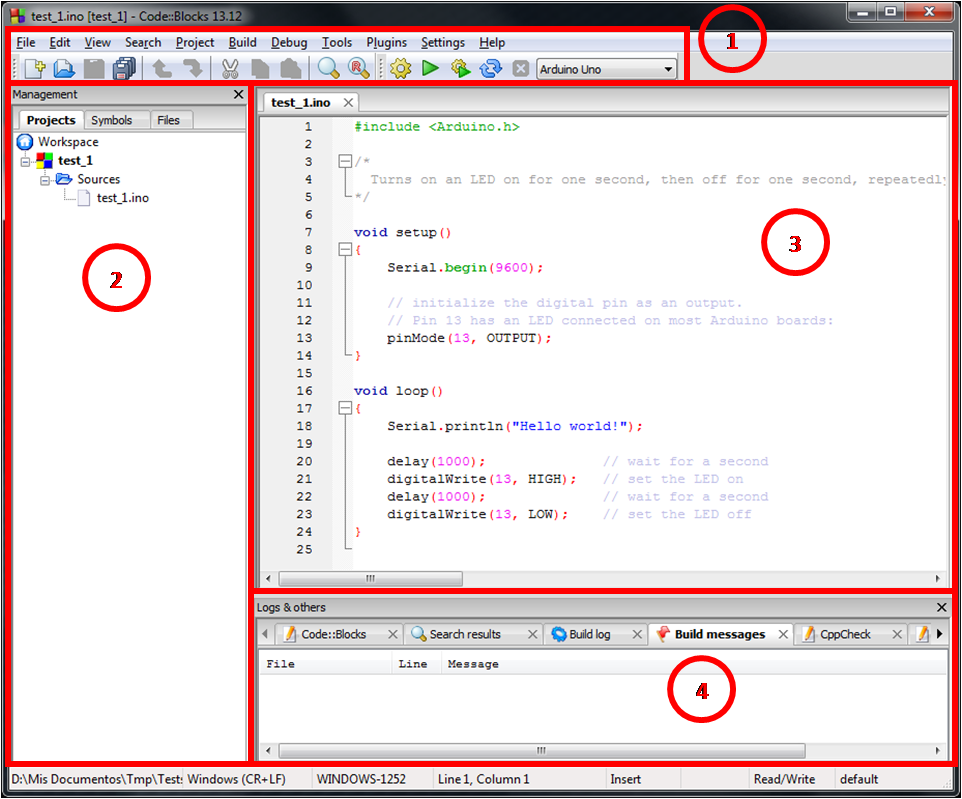
In the project tree, navigate to the main.cpp and open it by double-clicking (if it isn't open already). Hit OK to close the project properties window. elf suffix to "Output filename"Īdjust the Release target properties as shown in the screenshot Uncheck "Auto-generate filename prefix".Right-click the project root again and open the "Project Properties" window:Īdjust the Debug target properties as shown in the screenshot.How this is named is given in the "Project Properties". In one of the above steps we have configured arm-none-eabi-size, arm-none-eabi-objcopy and arm-none-eabi-objdump to manipulate the build output - but they won't find the output file yet. Release Target: Go to "Compiler Settings"-> "Compiler Flags" and enable "Strip all symbols from binary (minimizes size) ".Debug Target: Go to "Compiler Settings" -> "Compiler Flags" and enable "Produce debugging symbols ".The top-level options are fine now, but the individual target need some fine-tuning. These will be covered in the next post.Ĭode: arm-none-eabi-size $.lst Now we have the files and compiler set up, but Code::Blocks doesn't know what compiler flags to set, where include files should be searched for, and so on.

You can leave everything as it is and add the files to both targets (Debug and Release): Select the teensyduino core base folder (/hardware/teensy/cores/teens圓): Right-click the project root and click on "Add files recursively": It's time to add the teensyduino core sources. You should see an almost empty project now.

#Codeblocks arduino tutorial how to#
If Code::Blocks complains that it doesn't know how to set exception flags for this compiler: That's ok, we'll do that later. It's also possible to change the compiler later, but beginners might run into problems with that. If you haven't configured it yet, abort and do that now ( how?). Select your teensyduino arm gcc compiler.Select "Console Application" and click on "Go":.In the welcome screen click on "Create a new project" (or use File->New->Project.) to open the project wizard:.The good news is that you can create a project template after you have created this project, and reuse it. Setting up a teensyduino project in Code::Blocks is not easy, but I'll try to make this as simple to understand and follow as possible. The zipped project doesn't have debug and release targets (because we can't use a hardware debugger on the teensy), but targets for teensy 3.0 and teensy 3.1 instead. The zipped project differs a bit from the tutorial below. Zipped project template with instructions in the project notes: cb_teensyduino_120_simple.zip A configured teensyduino arm-gcc in Code::Blocks.

Here's how to use Code::Blocks to create a simple teensyduino (Teensy 3.0 or 3.1) project.


 0 kommentar(er)
0 kommentar(er)
